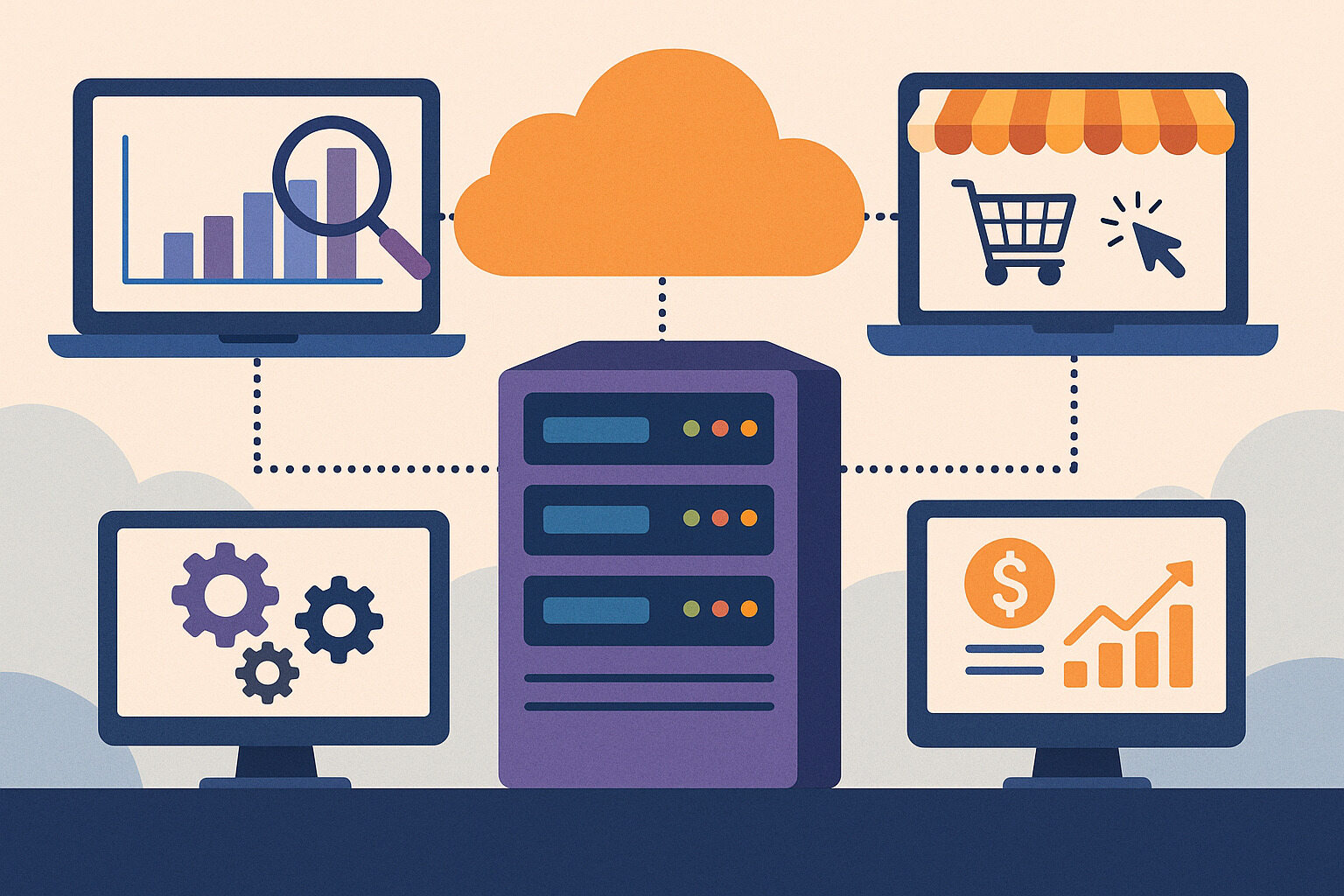Wider Action Through Multi-System Integration
Modern businesses rely on large volumes of data, rapid analysis, and real-time results. Given these demands, a single machine or server is no longer sufficient. This is where distributed computing comes in. Simply put, it’s a method of using multiple computers to work on tasks simultaneously, helping each other to accelerate the overall process.
This concept isn’t new, but its use has significantly expanded across industries. From detecting fraud in banking to real-time recommendations in online stores, distributed computing plays a quiet but essential role. Even if end-users don’t notice it, it’s a crucial part of backend operations.
Some companies are just starting with simple grid-based jobs for data processing. Others, including large corporations, are capable of running cloud clusters for hundreds of services concurrently. In all these cases, the goal is the same: to make operations more efficient through technology.
Faster Results in Data Analytics
One of the most common use cases for distributed computing is data analytics. There’s no need to process millions of data points on a single machine. Instead, tasks are split and distributed across multiple systems working in parallel. What used to take days can now be completed within hours.
For example, a retail business can instantly process sales data from hundreds of stores in various locations. By dividing the workload, trends in inventory, customer behavior, and pricing performance can be analyzed simultaneously. Each node contributes to a comprehensive view of the business.
This becomes even more valuable when data is used for decision-making. If a product suddenly sees increased demand in one region, the system can immediately detect it and enable swift action. Not only does this save time—it also sharpens business responsiveness.
Real-Time Fraud Detection
Banks and financial services now rely on distributed computing for fraud detection. With thousands of transactions per second, it’s impossible to monitor them manually. But with multiple processors, fraud detection models can run in real time, evaluating transactions as they occur.
If there’s suspicious activity—like a sudden withdrawal overseas or repeated declined transactions—the system detects it instantly. With dedicated nodes for security checks, the user experience remains unaffected. Alerts are timely, without adding strain to operations.
One company that implemented such a setup reduced its fraud losses by nearly 40% within just a few months. The secret? Continuous processing, proactive modeling, and distributed nodes scanning for threats—even before manual review.
Wider Reach in Content Delivery
For businesses focused on streaming, digital media, or e-learning, one of the biggest challenges is fast content delivery—especially with many users simultaneously watching, listening, or downloading. If a single server handles all requests, the service will inevitably slow down.
The solution? Distribute content across multiple servers in different locations. This way, users access content from the nearest node. Load times improve, playback is smoother, and the main server isn’t overwhelmed. Even during peak hours, the service remains uninterrupted.
Companies in the video sharing industry use Content Delivery Networks (CDNs) powered by distributed computing. Within seconds, they can deliver thousands of video streams across continents—seamlessly and without lag.
Running Large-Scale Simulations
In the engineering and scientific sectors, simulation is essential for experiments, products, or natural phenomena. These tasks demand immense computing power—where distributed computing becomes a game-changer.
An automotive company uses a distributed system to simulate crash tests. Instead of building numerous physical cars, they use computer models. The simulations are split and executed across thousands of core nodes, producing results within hours.
The same applies to climate modeling or drug research. The number of variables is enormous, and using a single system could take weeks or months. But by assigning each segment to a cluster of computers, insights become available much faster for timely decisions.
Managing the Supply Chain
Supply chains are one of the most dynamic aspects of business. Shipments arrive, stocks deplete, and deliveries must meet schedules. To monitor all these in real-time, a distributed system is essential—capable of syncing and updating simultaneously.
Warehouse data is sent to a cluster that determines when to reorder inventory. Meanwhile, a separate node in the logistics system optimizes delivery routes. These components operate independently but harmoniously.
If a shipment is delayed, the inventory system can instantly be alerted and search for alternative sources. This level of agility is impossible with a single processor handling all decisions. With multiple systems contributing knowledge, responses are much faster.
Delivering Personalized Recommendations
In online shopping and streaming platforms, personalized service is key. To achieve this, historical data, user preferences, and real-time actions must all be processed. Distributed computing excels in making this happen.
A good example is real-time product recommendations. As a user browses, the system analyzes patterns in the background, evaluates options, and suggests products accordingly. This is only possible through parallel processing by multiple computers.
Even with a million users online at once, performance remains unaffected. Different user groups can be assigned to different clusters. This is how major online platforms maintain high-speed services, regardless of the traffic volume.
Protecting Critical Information
Cybersecurity isn’t just for large enterprises. In the age of ransomware and phishing, every business must have solid protection. One use case for distributed computing is real-time anomaly detection, which immediately flags threats.
If user behavior deviates from normal patterns—like sudden bulk file access or unknown IP logins—the system quickly evaluates whether the activity is safe. The decision doesn’t come from one location but from multiple systems working together to assess the situation.
This type of protection is proactive. With distributed analysis, prediction models can also run to identify vulnerable parts of the system. In this way, security is strengthened without the need to increase manpower.
Ensuring Business Continuity Despite Failures
Every system can experience problems. But with distributed computing, the entire operation doesn’t stop when one part fails. Clusters are equipped with redundancy, failover mechanisms, and self-healing features.
If one server shuts down due to overheating, its workload is instantly transferred to another node. There’s no downtime, no user disruption. The transition happens in the background, and operations continue without a hitch.
Some companies now make geo-redundancy standard. If one location loses power, backups in another region take over. With this kind of setup, business continuity is assured, no matter the disruption.
Fusing Technology with System Intelligence
Distributed computing has become the foundation for faster, more reliable, and smarter businesses. From small transactions to simulations lasting hours, the ability of multiple systems to collaborate has been key to success.
As data grows and customer expectations rise, old methods no longer suffice. Systems must now adapt, analyze, and deliver results on time. In today’s business landscape, distributed computing is no longer optional—it’s an indispensable tool at every operational stage.



